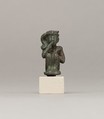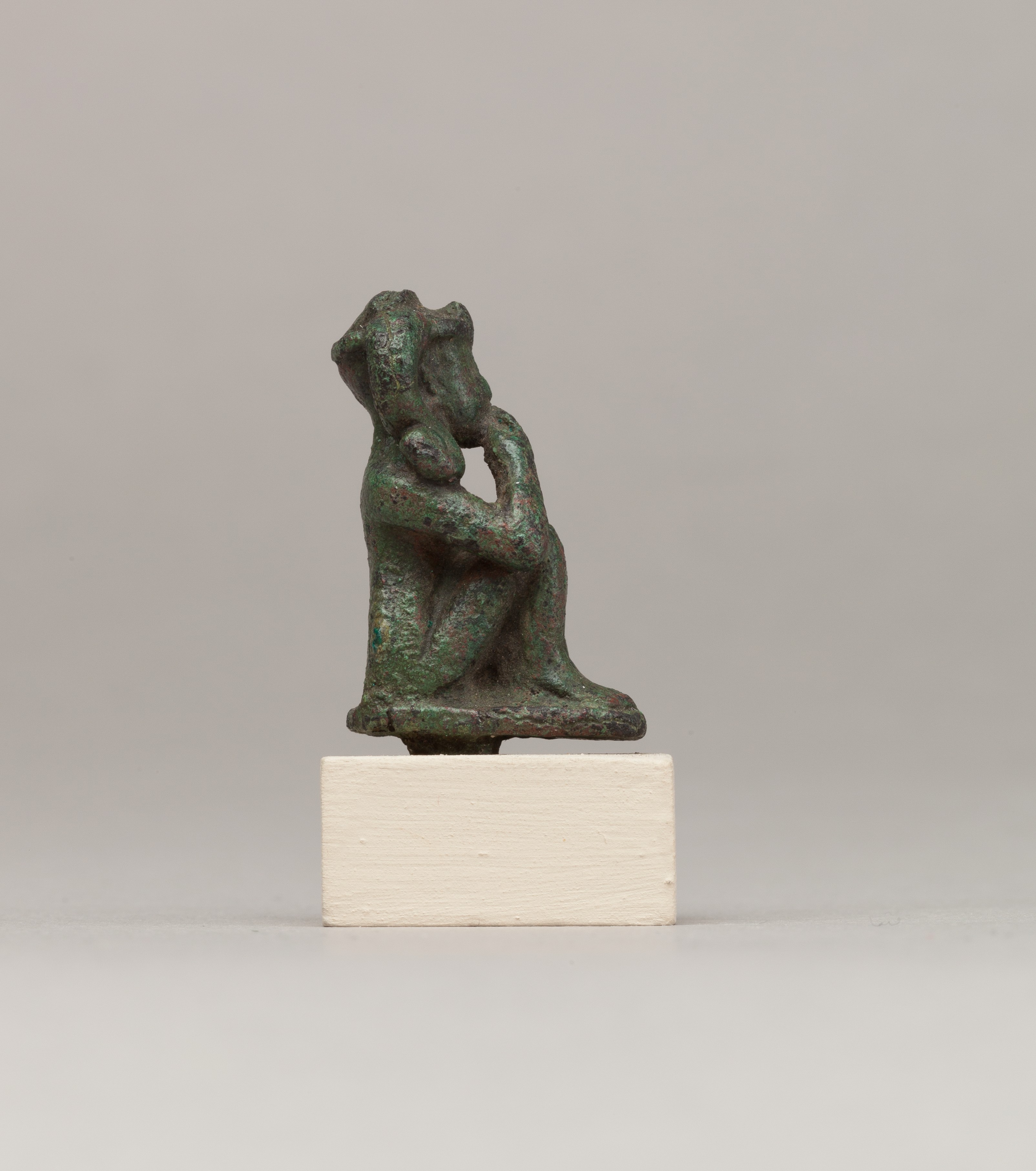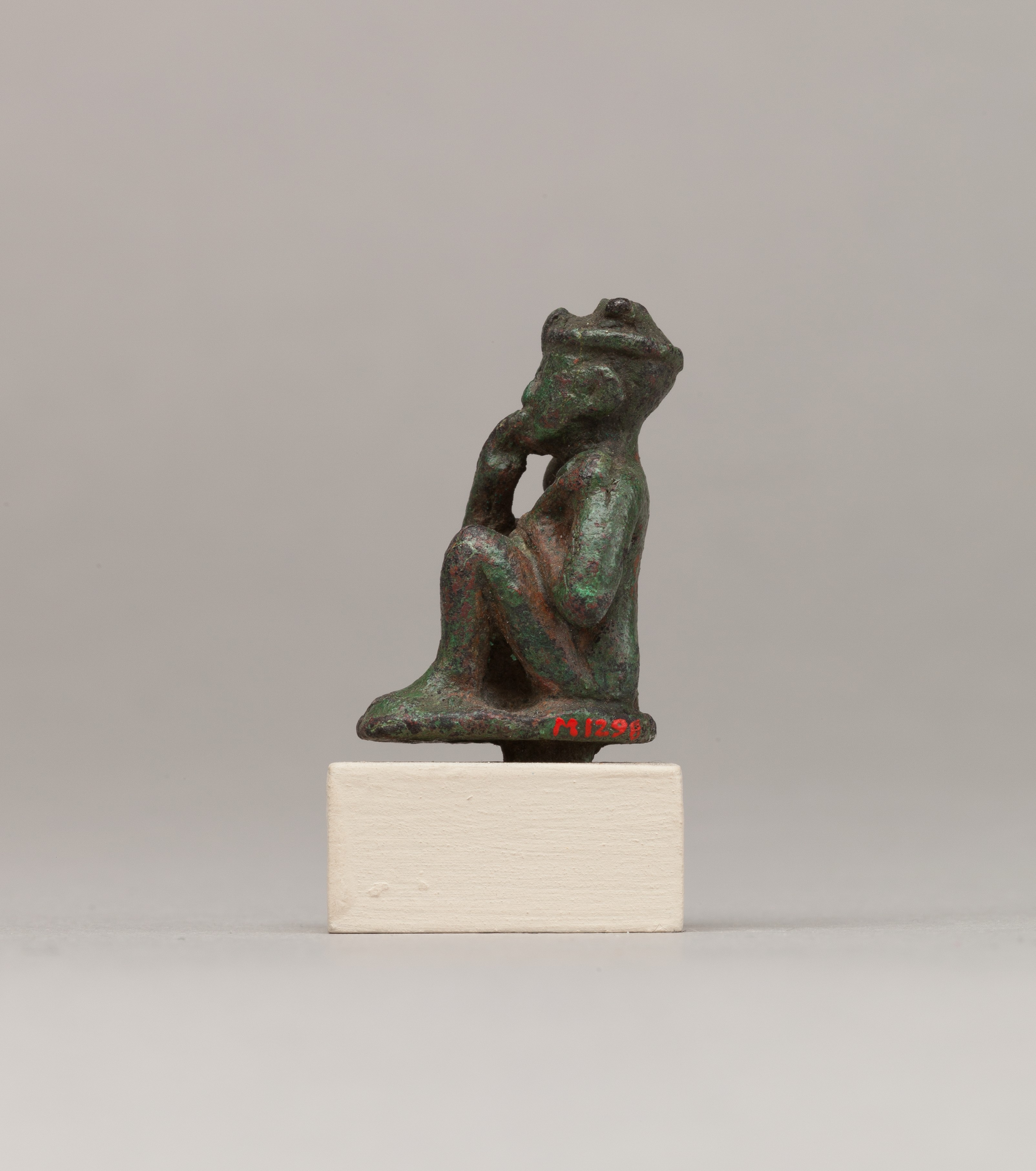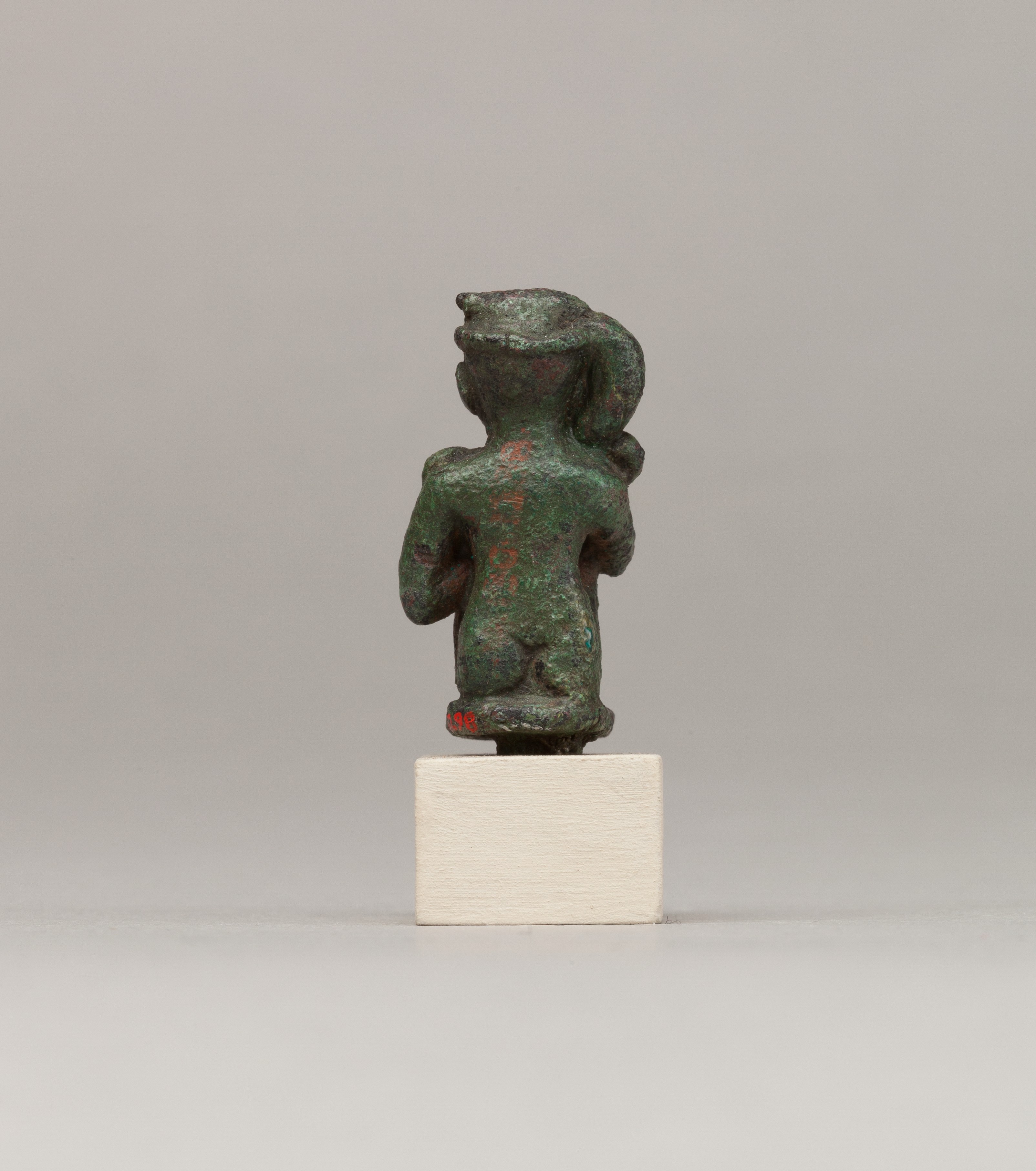Crouching child god holding scepter
Late Period–Ptolemaic Period
Not on view
The figure represents a child god in a squatting position. He holds the crook which alludes to his royal status, and he once wore a crown, which is now broken. The child god is distinguished from adult gods by a range of iconographic clues: his nudity, the finger raised to the mouth (a child-like gesture), and the thick sidelock. Often child gods in this position sit on lotus buds, a flower whose imagery resonates with the associations of rebirth and regeneration attributed to child gods.
Child gods grew in popularity and cult from the Third Intermediate Period onwards, rivaling even the most powerful and ancient gods, especially as temple offerings. The best known is Horus the Child (Harpokrates), who was the son of Isis and Osiris, but many others existed, including Khonsu the Child, Ihy, and Harsiese, among others. Thus it is difficult to assign a precise identity to this statuette without an associated inscription or even a crown.
Due to rights restrictions, this image cannot be enlarged, viewed at full screen, or downloaded.
This artwork is meant to be viewed from right to left. Scroll left to view more.





